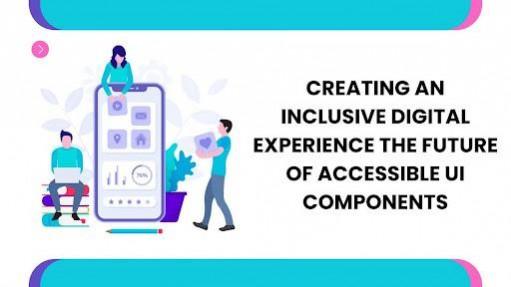
In today's dynamic digital era, accessibility is no longer an optional feature but a fundamental necessity. Venkata Prasanna Kumar Pentakota, an experienced expert in user interface development, delves into pioneering advancements in designing custom UI components that adhere to Section 508 accessibility standards. His work is dedicated to narrowing the digital divide, ensuring web applications provide a seamless and inclusive experience for all users, including those with disabilities. By focusing on usability, he champions equitable digital access for diverse communities.
Understanding the Importance of Section 508 Compliance
Digital accessibility is governed by Section 508, a mandate requiring electronic and information technology to be usable by individuals with disabilities. This framework ensures that web applications, software, and digital platforms provide an inclusive experience, enabling equal access to information for all users. With evolving technology and new accessibility standards, developers are now tasked with integrating features that align with these requirements while maintaining a seamless user experience.
Innovations in Custom UI Component Development
Traditional UI elements often fall short of accessibility requirements, prompting the need for custom solutions. The latest innovations in UI development emphasize the use of semantic HTML, ARIA (Accessible Rich Internet Applications) roles, and structured event handling to enhance usability for individuals with visual impairments and motor disabilities. By incorporating focus management systems and keyboard navigation capabilities, developers can create interfaces that provide a smooth and equitable experience for all users.
The Role of ARIA in Accessible Design
ARIA attributes enhance web accessibility by making elements comprehensible to assistive technologies. Features like aria-labels, aria-expanded, and aria-controls improve interaction with dynamic content, benefiting users navigating forms, drop-down menus, and modal dialogs through clear state representation and accessibility improvements.
Ensuring Cross-Platform Accessibility
A key challenge in accessibility-focused UI development is ensuring consistency across devices and browsers. Developers must integrate accessibility testing frameworks early in the cycle to detect compatibility issues, ensuring a seamless and inclusive experience across multiple platforms for all users.
Enhancing Mobile Accessibility
With increasing web traffic from mobile devices, accessibility must extend beyond desktops. Touch-optimized elements, voice commands, and gesture-based interactions empower users with disabilities to interact seamlessly. Ensuring UI components adapt to different screen sizes, orientations, and input methods is vital for an inclusive mobile experience.
Screen Reader Optimization for Better User Experience
Screen readers serve as an essential tool for visually impaired users, translating digital content into audible speech or Braille. To optimize user interaction, developers must structure UI components using proper headings, landmarks, and navigation aids. Studies indicate that users prefer heading-based navigation and structured page layouts, reinforcing the need for a well-organized digital environment.
The Impact of Automated Testing on Accessibility Compliance
Automated testing tools have revolutionized accessibility validation by detecting compliance violations early in the development process. By integrating automated accessibility checks into CI/CD pipelines, developers can proactively address potential issues, reducing remediation costs and ensuring that their products meet accessibility standards from inception.
Future Trends in Accessible UI Design
The landscape of accessibility is evolving rapidly, with emerging technologies paving the way for enhanced digital experiences. AI-driven accessibility tools, real-time accessibility monitoring, and machine learning-powered validation techniques are shaping the future of inclusive UI development. As organizations adopt these advancements, the digital ecosystem will become more accessible, empowering users of all abilities.
In conclusion, Venkata Prasanna Kumar Pentakota's work in accessible UI development underscores the importance of designing interfaces that accommodate diverse user needs. His research and innovations lay the groundwork for future improvements in digital inclusivity. As accessibility standards advance, developers must proactively adopt these changes, ensuring that technology continues to empower and provide an inclusive experience for all users.

















